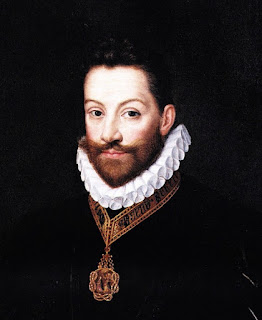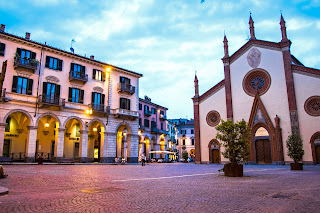Ruler who made Turin the capital of Savoy
 |
| A portrait of Emanuele Filiberto, Duke of Savoy, by an unknown artist |
After becoming Duke of Savoy he recovered most of the lands his father Charles III had lost to France and Spain and he restored economic stability to Savoy.
Emanuele Filiberto was born in 1528 in Chambery, now part of France. He grew up to become a skilled soldier and served in the army of the emperor Charles V, who was the brother-in-law of his mother, Beatrice of Portugal, during his war against Francis I of France. He distinguished himself by capturing Hesdin in northern France in July 1553.
When he succeeded his father a month later he began the reacquisition of his lands.
His brilliant victory over the French at Saint Quentin in northern France in 1557 on the side of the Spanish helped to consolidate his power in Savoy.
 |
| Emanuele Filiberto, as portrayed by the Italian painter Giorgio Soleri |
Emanuele Filiberto took advantage of the political struggles between the European powers to slowly increase his domain.
The city of Turin was part of the territory he recovered from the French and he moved Savoy’s capital from Chambery to Turin in 1562, fortifying and enlarging the city. He also substituted Italian for Latin as the official language of Savoy.
Just before his death in the city at the age of 52 he was arranging for Savoy to acquire the Marquisate of Saluzzo.
Emanuele Filiberto was buried in the Chapel of the Holy Shroud in Turin Cathedral.
 |
| Turin's duomo - the Cattedrale di San Giovanni Battista |
Turin Cathedral, or the Cattedrale di San Giovanni Battista as the Duomo is known in Italian, was built between 1491 and 1498 on the site of an old Roman theatre. Emanuele Filiberto is one of the members of the House of Savoy buried there, while others are buried in the Basilica di Superga on the outskirts of the city.
 |
| Emanuele Filiberto brought the Shroud of Turin (above) to Turin from Chambery in France |
It is fitting that Emanuele Filiberto is buried in the Chapel of the Holy Shroud as he was responsible for having the Shroud brought from Chambery in France to the Duomo in Turin in 1578 and it has remained there ever since. A project for the enlargement of the Duomo in order to create a more luxurious home for the Shroud was begun in 1649 by Bernardino Quadri and completed by Guarino Guarini. In 2002 the Shroud was restored so that the reverse side of the cloth could be photographed for the first time. In 2013 high definition images of the Shroud were put out on the internet and on television. These could be magnified on computers to show details not visible to the naked eye. Pope Francis urged people to contemplate the Shroud with awe but he stopped short of asserting its authenticity.
More reading:
The Duke of Savoy responsible for a notorious massacre
Why Savoy duke Victor Amadeus I may have been poisoned
Iolanda of Savoy - the banished princess
Also on this day:
1585: The death of composer Andrea Gabrieli
1860: The birth of New York crime fighter Joe Petrosino
Home





